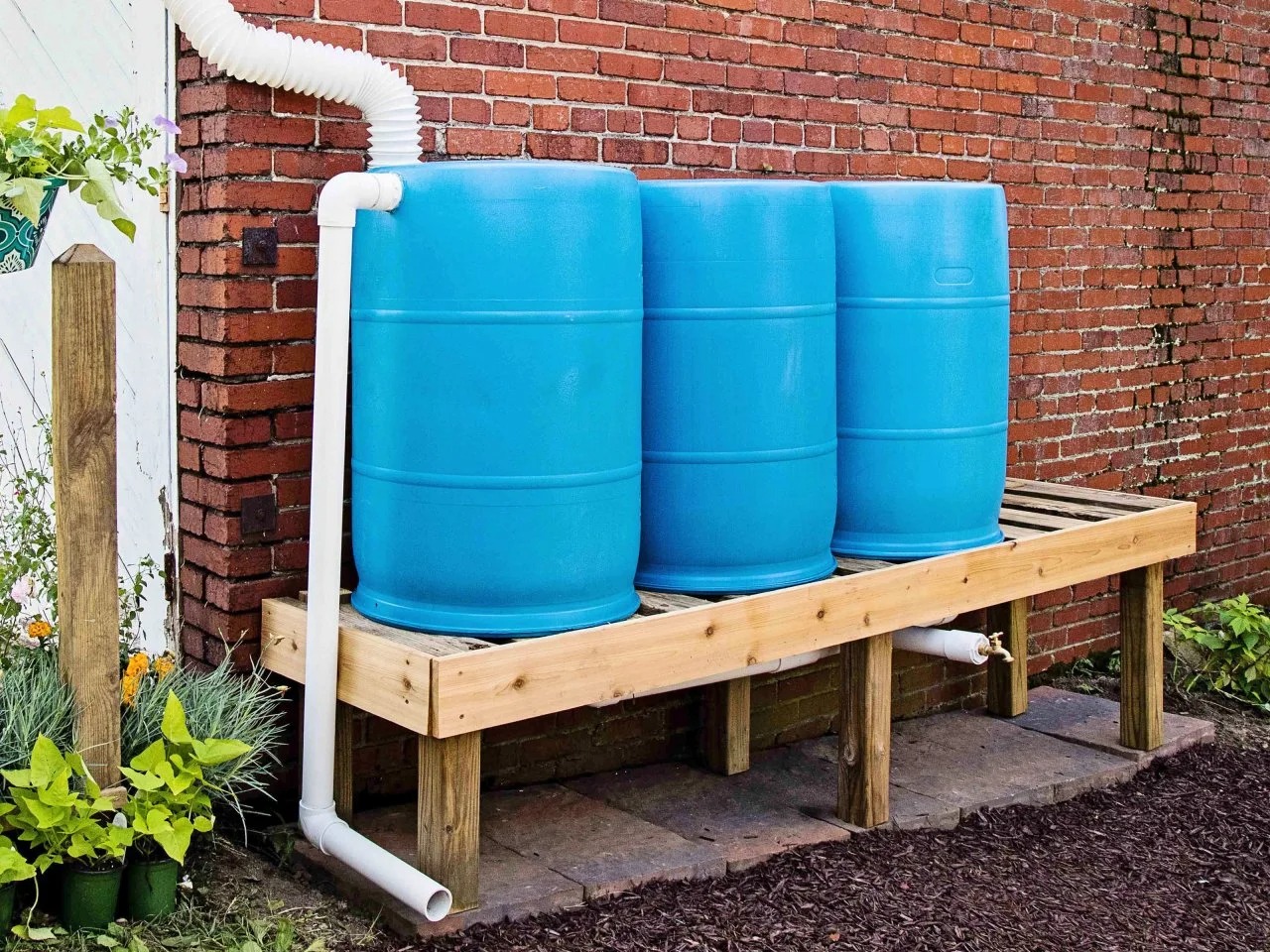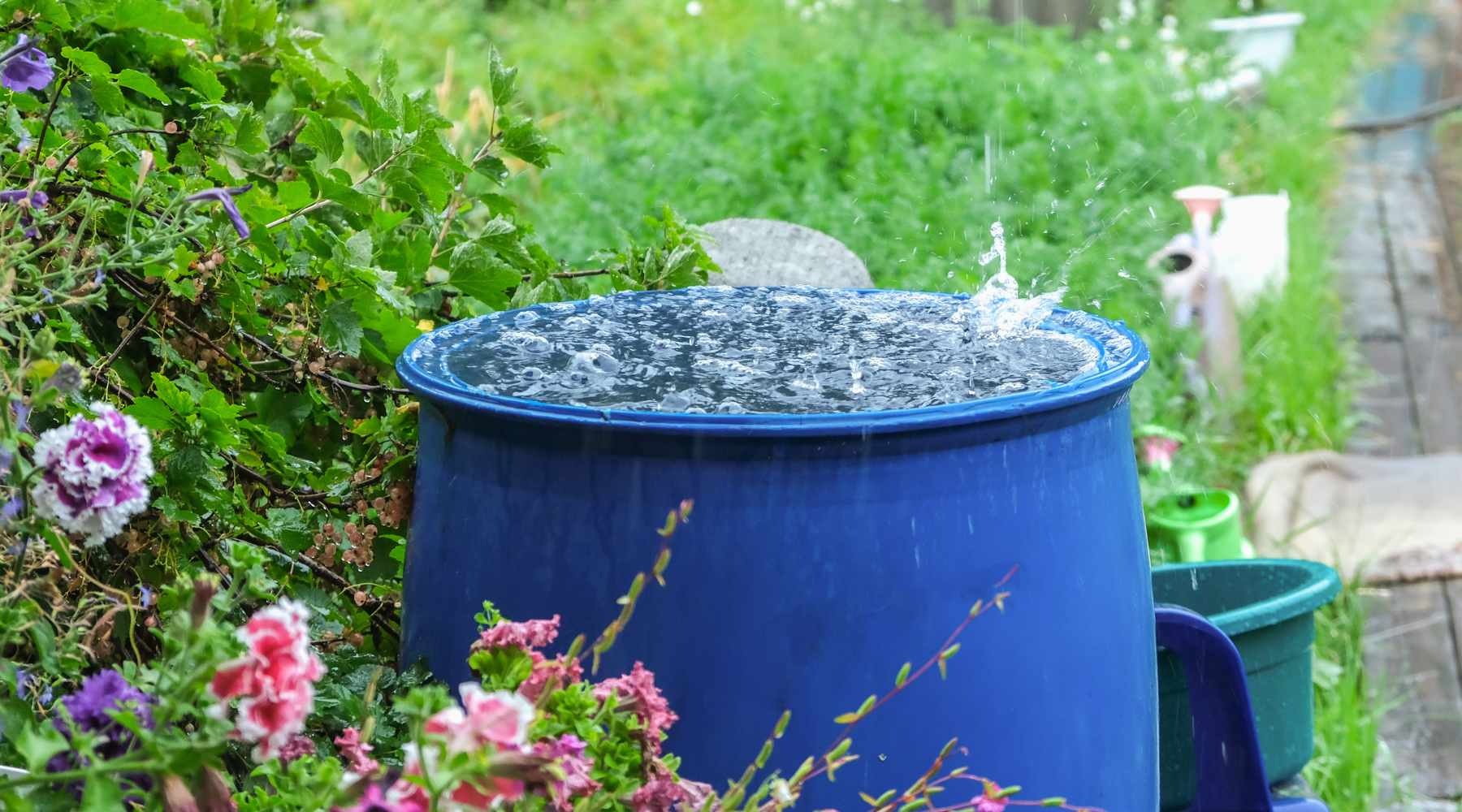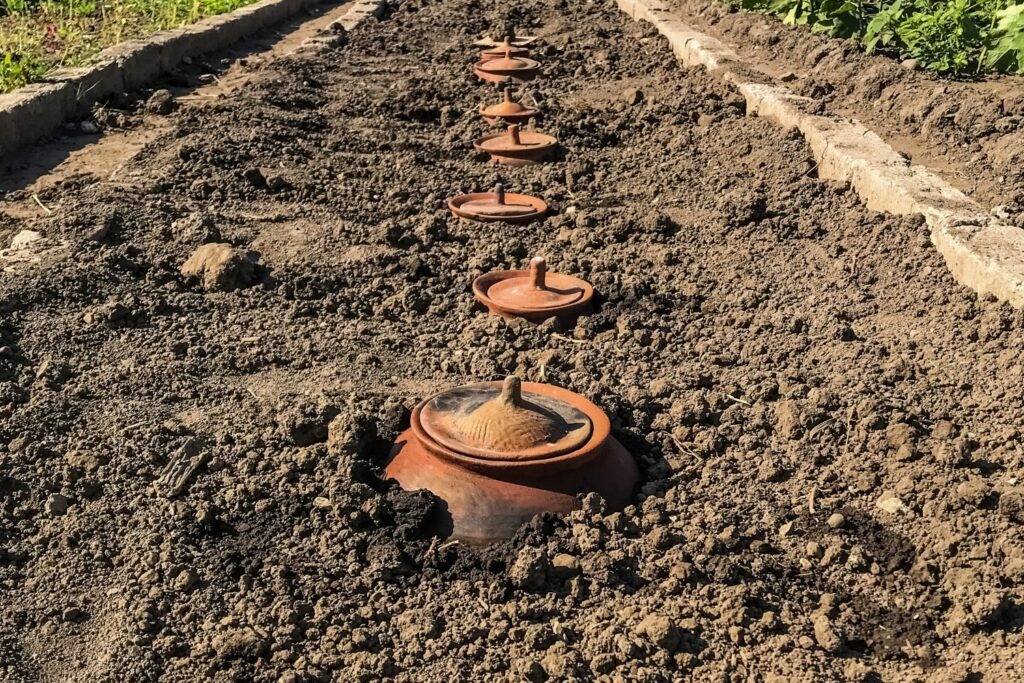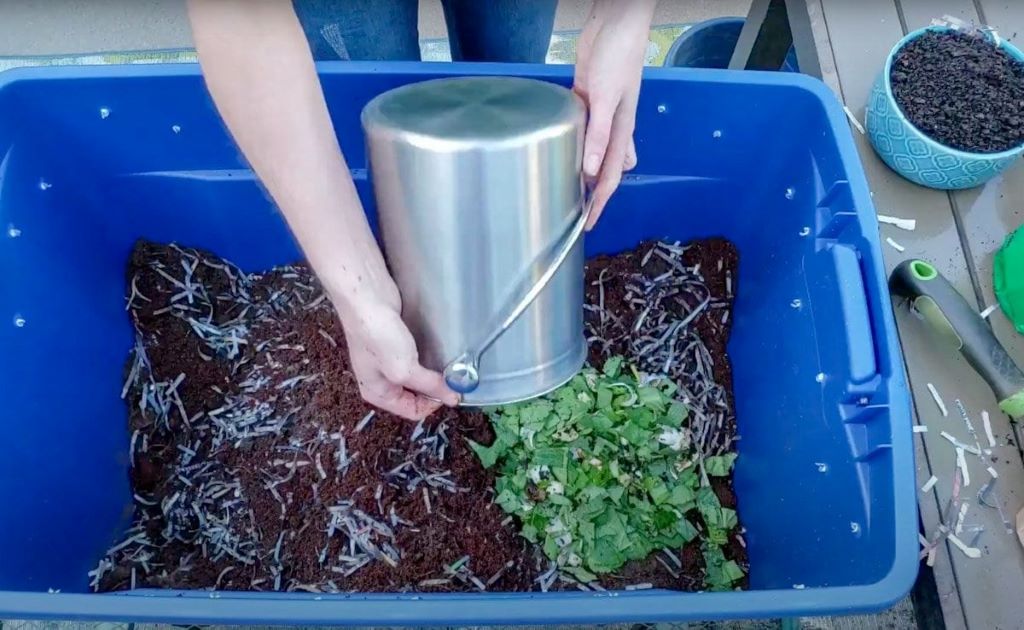Imagine standing in your backyard after a summer storm. Raindrops still patter on the leaves. You glance at your garden—parched tomatoes and wilting flowers beg for a drink. But instead of grabbing the hose, you turn a simple valve. Cool, fresh water flows out, straight from the sky. No chlorine taste. No utility bill spike. Just pure, nature-given hydration.
This scene plays out in homes across the country. A DIY rainwater harvesting barrel system makes it real. You capture roof runoff in barrels. Store it for later. Use it to water plants, wash the car, or even flush toilets. It’s simple tech with big impact. Folks call it rain collection or barrel catchment. Whatever the name, it turns waste into wealth.
Why does this matter now? Water scarcity hits hard. In 2024, drought affected 78% of Americans—the worst in 25 years, per U.S. Drought Monitor data from government records. The EPA notes urban runoff pollutes rivers yearly. Yet, a basic barrel setup cuts that flow. It saves you gallons. One 1,000-square-foot roof catches 600 gallons in a single inch of rain, says the USGS. That’s free water for weeks of gardening.
I remember my first setup. Rain poured that night. By morning, my 55-gallon barrel brimmed. I watered my veggies without a drop from the tap. Flowers perked up. Bills dropped. You can do this too. This guide walks you through every step. Let’s dive in and build yours.
Why Build a DIY Rainwater Harvesting Barrel System?
You start this project for one reason: control. Municipal water costs rise. Droughts linger. A barrel system hands power back to you. It collects what falls free. No pumps needed for basics. Just gravity and smarts.
Think bigger. Environment wins. Rain barrels reduce stormwater surge by 20-50%, per EPA studies. Less flooding. Cleaner streams. Your yard soaks it up slow. No gush to sewers loaded with oils and trash.
Health perks shine for plants. Rain lacks salts and chemicals in tap water. Tomatoes taste sweeter. Herbs grow lush. A 2024 study from North Carolina State University found harvested rain boosts crop yields 15% in home plots.
Cost savings add up quick. Average U.S. household uses 300 gallons daily outdoors in summer, says USGS. Barrels cover half that easy. Over years, you offset setup with zero water fees.
Community stories inspire. Take Sarah in Texas. She stacked three barrels last spring. Saved 5,000 gallons by fall. Her drought-hit lawn stayed green. Neighbors copied her. “It’s like printing water money,” she laughs.
But it’s not all roses. Legal checks matter. Most states greenlight residential rain collection now. Colorado flipped rules in 2009—permits easy for homes. Texas exempts sales tax on gear. Check local codes via your water district site. HOAs might fuss over looks, but screened barrels blend in.
Global trends push this too. The rainwater harvesting market hit $1.6 billion in 2024, per IMARC Group reports. Growth at 4.6% through 2033. Folks see it as smart, not quirky.
Ready to join? A barrel system fits any yard. Small plot? One 55-gallon unit. Bigger space? Link multiples. It scales with you.
Benefits of a Home Rain Barrel Collection Setup
Benefits stack like wet firewood. You feel them right away. Let’s break them down.
First, water security. Droughts hit 76 million systems worldwide in 2024, per market reports. Your barrels buffer that. Store 200-500 gallons easy. Enough for veggie patches or pet baths.
Eco-gains top the list. Harvesting cuts municipal pull by 30%, says EPA research. Less energy for treatment. Lower carbon print. One home setup saves 1,300 pounds of CO2 yearly—equal to a short car trip.
Garden glow-up follows. Soft rain revives soil. No fluoride buildup. A Rutgers study shows plants absorb it 25% better. Expect fuller blooms, stronger roots.
Money flows in. Outdoor use guzzles 40% of home water, per USGS. Barrels slash that. Payback in one season for basics.
Flood fight rounds it out. Barrels hold back 1,000 gallons per storm. Direct overflow to gardens. No basement woes.
Real talk: A family in California shared their tale. Pre-barrels, summer bills topped $150. Post-setup? Down 40%. They even host neighborhood workshops now.
Variations spice it. Add filters for cleaner catch. Link to soaker hoses for auto-watering. Benefits grow with tweaks.
Essential Materials for Your Barrel Rainwater Capture Project
Gather smart. Quality lasts. Start with the core: a food-grade 55-gallon plastic drum. Blue barrels from delis work great—clean, sturdy. Avoid metal; it rusts.
Downspout diverter next. Flexi-fit ones snap on easy. They shunt first dirty flush away. Keeps water pure.
Screen mesh seals the top. Fine wire stops bugs, leaves. Brass lasts longest.
Spigot at bottom. Brass or plastic, 3/4-inch thread. Gravity feeds hoses fine.
Overflow elbow pipes excess safe. PVC, 2-inch diameter.
Stand elevates it. Cinder blocks or wood frame. Boosts pressure 2-3 feet up.
Sealant and tools wrap it. Silicone caulk. Drill with hole saw. Wrench set.
Pro tip: Source barrels free from Craigslist. Bakeries dump them clean. Total kit: under $100 if thrifty.
For multiples, add link hoses. T-connectors chain them. Scale to your roof size.
Latest nods go to UV-resistant plastics. 2025 guides from HGTV stress them for algae block.
Stock up. Build weekend-ready.
Step-by-Step Guide to Assemble Your DIY Barrel Water Harvester
Hands dirty time. Follow these steps. Take a Saturday. Emerge with a working wonder.
Step 1: Pick Your Spot
Choose level ground near downspout. Shade cools water. Five feet from house foundation. Avoid low spots—flood risk.
Measure roof catchment. 1,000 sq ft yields 623 gallons per inch rain, USGS math. Match barrels to that.
Step 2: Prep the Barrel
Drain any residue. Rinse inside. Drill 3/4-inch hole near base for spigot. Thread it in. Caulk tight.
Cut 2-inch top hole for inlet. Fit downspout adapter. Seal edges.
Add overflow hole at full mark. Elbow pipe out to garden bed.
Screen the lid. Staple mesh firm.
Step 3: Build the Stand
Stack cinder blocks pyramid-style. Or frame with 4×4 posts. Level it. Secure barrel with straps—tip-proof.
Height: knee-high for easy access.
Step 4: Connect to Gutters
Cut downspout 6 inches above barrel. Install diverter. First-flush tube dumps initial gunk.
Link hose from diverter to inlet. Zip-tie secure.
Step 5: Test and Overflow
Run hose test. Check leaks. Set overflow to splash away—no foundation hit.
Full? Water cascades to plants. Nature’s bonus.
My build took four hours. First rain filled it half. Magic.
Scale up: Chain two barrels. Overflow from first feeds second. Doubles storage.
Troubleshoot: Leaks? Recaulk. Clogs? Flush diverter.
You’re set. Watch it work.
Installation Tips for Optimal Rain Barrel Efficiency
Nail placement. It maxes yield. Angle downspout slight—flows smooth.
Winter prep: Drain full. Disconnect. Store dry. Freezes crack plastic.
Multi-barrel chain: Use Y-splitters. Balance fill.
First-flush add: PVC standpipe. Dumps 10-20 gallons start. Cleaner catch.
Pump option: Solar for hills. Lifts to raised beds.
Shade cloth over: Cuts algae 50%, per 2024 Rutgers tips.
Legal nod: Sign “Non-Potable.” Codes like it.
Yard blend: Paint barrel earth tones. Hide behind shrubs.
Test yield: Track storms. App like RainWise logs it.
These tweaks turn good into great.
Maintenance Routines to Keep Your System Fresh
Care keeps it crisp. Neglect breeds slime. Follow this.
Monthly: Check screens. Clear debris. Hose flush.
Quarterly: Drain full. Scrub inside. Vinegar kills algae—1 cup per 50 gallons.
Winter: Empty. Invert barrel. Cover spigot.
Spring: Reconnect. Test flow.
Pest patrol: Mesh tight. No standing water invites skeeters.
Water check: Cloudy? Filter add. EPA says sediment traps first.
Annual deep clean: Disassemble. Bleach dilute if needed—1:10 ratio. Rinse triple.
My routine: Ten minutes monthly. Barrel stays crystal.
Tools: Soft brush. Wet vac for sludge.
Stay vigilant. It pays.
Creative Uses for Collected Rain in Your Daily Routine
Don’t stop at garden. Expand.
- Lawn love: Soaker hoses sip slow. Greener grass, less guzzle.
- Car clean: Bucket fill. No streaks. Saves 20 gallons wash.
- Pet play: Fresh baths. Dogs dig it.
- Tool rinse: Mud off shovels. Workshop win.
- Compost boost: Wet it down. Faster break.
Advanced: Toilet tank add. Cuts indoor use 20%.
Kids learn: “Rain jobs” teach stewardship.
Case: Austin family. Barrels feed flock bath, kid pool top-off. Joy multiplies.
Mix it up. Water works wonders.
Common Mistakes and How to Dodge Them in Barrel Builds
Pitfalls lurk. Sidestep these.
Overfill ignore: No overflow? Flood city. Always pipe away.
Bug breach: Loose screens breed. Double-check mesh.
Dirty first pour: Skip diverter? Gunk city. Install it.
Stand skip: Low flow frustrates. Elevate always.
Wrong barrel: Chemical residue? Food-grade only.
Code blind: Fine one day, ticket next. Ask city hall.
My goof: Forgot winter drain. Cracked spigot. Lesson learned.
Learn quick. Build strong.
Case Study: A Family’s Journey with Home Rain Storage
Meet the Garcias in Arizona. Drought central. 2024 heat scorched their acre plot.
They started small. One 55-gallon barrel. Hooked to garage gutter. Yield: 200 gallons summer.
Plants thrived. Bills fell $40 monthly.
Upgraded: Three linked. Solar filter. Yield: 1,200 gallons.
Now? Full irrigation. Even fruit trees fruit heavy.
“Independence feels good,” says Maria. They share plans at block parties.
Stats back it: Their setup cut runoff 40%, per local water audit. EPA-like win.
Your story next?
Advanced Tweaks for Pro-Level Barrel Rain Catchers
Level up. Add smarts.
Solar pump: Hillside lift. 12V quiet.
App monitor: Sensors ping full levels.
Multi-stage filter: Sediment, carbon, UV. Near-potable.
Underground link: Cistern chain. Bigger store.
Green roof tie: Extra yield.
2025 trend: IoT valves. Auto-divert storms.
Cost? Worth it for big yards.
Experiment. Innovate.
Conclusion
You hold the blueprint. A DIY rainwater harvesting barrel system saves water. Cuts costs. Greens your world. From spot pick to maintenance musts, you know the path.
Stats seal it: 76 million global installs in 2024. Yours adds to that force.
Grab tools. Pick a sunny Saturday. Build it. Watch first rain fill. Feel the shift.
Start today. Your garden thanks you. Share your build—tag friends. Water wisdom spreads.
FAQs
What Size Barrel Fits a Small Yard?
Go 55 gallons for starters. Catches 1-inch rain from 1,000 sq ft roof. Scales easy.
Is Rain from Barrels Safe for Veggies?
Yes for soil soak. Avoid leaves. Wash produce. Non-potable label wise.
How Much Rain Does My Roof Catch?
Use USGS formula: Roof sq ft x 0.623 x rain inches. Example: 1,500 ft x 0.623 x 1 = 934 gallons.
Can I Link Multiple Barrels?
Absolutely. Overflow hose chains them. Doubles storage seamless.
What’s the Best Spot for My Barrel?
Level, shaded, near downspout. 5 ft from house. Overflow to garden.
Related Topics: Vermicompost DIY in Your Garden
References
- U.S. Drought Monitor: https://droughtmonitor.unl.edu/
- USGS Rainwater Calculation: https://www.usgs.gov/special-topics/water-science-school/science/how-much-water-can-i-collect-my-roof
- EPA Rainwater Harvesting Guide: https://www.epa.gov/sites/default/files/2015-10/documents/gi_munichandbook_harvesting.pdf
- IMARC Group Market Report 2024: https://www.imarcgroup.com/rainwater-harvesting-market
- Rutgers NJAES Rain Barrel Build: https://njaes.rutgers.edu/E329/





